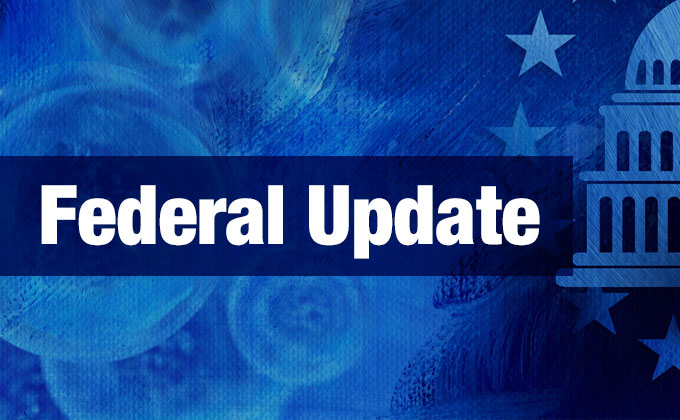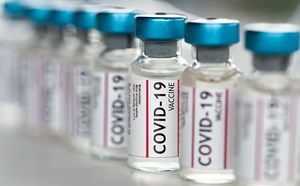Update (Aug. 11): View ACEP's new comprehensive summary of the 2021 Physician Fee Schedule Proposed Rule.
Take action: Join thousands of ACEP members who have urged their legislators waive the budget neutrality requirement for calendar years 2021 and 2022 by signing on to a bipartisan “Dear Colleague” letter.
Update (Aug 7): We’re talking about how this proposed rule effects EM on our regulatory blog. ACEP sent a letter expressing our concerns with the proposed cuts and calling on Congress to waive budget neutrality requirements to avert the cuts that pose a significant threat to EM physicians and the health care safety net.
---
On Aug. 3, 2020, the Centers for Medicare & Medicaid Services (CMS) released a Medicare annual payment rule for calendar year (CY) 2021 that impacts payments for physicians and other health care practitioners. The rule combines proposed policies for the Medicare physician fee schedule (PFS) with those for the Merit-based Incentive Payment System (MIPS)—the quality performance program established by the Medicare Access and CHIP Reauthorization Act (MACRA). Below is a high-level summary of key proposals, separated by proposed PFS and MIPS policies.
Physician Fee Schedule
- Conversion Factor: Due to the Centers for Medicare & Medicaid Services (CMS)’ decision to increase the office and outpatient evaluation and management (E/M) services in CY 2020, as well as some other technical refinements, there is a significant budget neutrality adjustment, as required by law. The proposed CY 2021 PFS conversion factor is $32.26, a decrease of $3.83 from the CY 2020 PFS conversion factor of $36.09. This is a significant decrease of over 10 percent.
- ED E/M codes: As referred to above, one of the biggest issues in last year’s physician fee schedule (PFS) rule, the Calendar Year (CY) 2020 Physician Fee Schedule final rule, was the increase in the office and outpatient E/M codes for 2021. Annual changes to Medicare physician payments are required to be budget neutral, so this large increase to the office and outpatient E/M codes finalized in last year’s rule had the potential to reduce Medicare reimbursement to emergency medicine by approximately -7 percent or even more (since most of you do not bill the office and outpatient E/M codes—rather, you typically bill the emergency departments (ED) E/M codes).
Over the past year, ACEP made it a major priority not to let this upcoming reduction to emergency medicine become a reality. Therefore, ACEP strongly advocated for CMS to increase the value of the ED E/M codes to appropriately align with the revised office and outpatient E/M code levels for new patients, and to take other actions to offset some of the expected reduction to emergency medicine reimbursement.
CMS has incorporated many of our recommendations in the CY 2021 PFS rule. Specifically, CMS is proposing to increase ED E/M codes to match the values that we had specifically advocated for (found below).
Work RVU Changes
|
Code |
2021 RVWs |
2020 RVW |
% chg. |
|
99283 |
1.60 |
1.48 |
+12.68% |
|
99284 |
2.74 |
2.60 |
+5.38% |
|
99285 |
4.00 |
3.80 |
+5.26% |
However, even with this increase, not much of the reduction to emergency medicine reimbursement has been eliminated. In the rule, CMS revised their estimate of the reduction for emergency medicine reimbursement due to the office and outpatient E/M policy from -7 percent to -9 percent. CMS proposal to adopt our recommended values offsets 3 percent of the -9 percent reduction. Therefore, overall, there is expected to be a -6 percent decrease to emergency medicine reimbursement in 2021.
HOWEVER, we are currently advocating for Congress to waive the budget neutrality requirement-- and if Congress acts, emergency medicine would instead experience a payment increase of approximately 3 percent instead of a -6 percent decrease.
- Telehealth: CMS is examining which of the codes that are temporarily on the list of approved Medicare telehealth services during the COVID-19 public health emergency (PHE) will remain on the list permanently. CMS is proposing to keep ED E/M code levels 1-3 (CPT codes 99281-99283) on the approved telehealth list for the remainder of the year after the PHE expires. However, CMS is not proposing to include ED E/M levels 4 and 5 (CPT codes 99284 and 99285) on the list of approved Medicare services past the duration of the PHE. CMS considers those services to be too intense to be routinely performed via telehealth. With respect to the ED E/M codes levels 1-3, CMS will consider adding them permanently to the list of approved Medicare services based on additional analysis after the pandemic ends, data, and feedback from commenters.
- Appropriate Use Criteria Program: CMS does not address the Appropriate Use Criteria (AUC) program in the rule, but the agency announced on August 10 that it would delay the full implementation of the program until at least the start of CY 2022. The program is currently in an educational phase, which means that clinicians are strongly encouraged but not required to comply with the requirements. While CMS had initially stated that clinicians must start complying with the requirements beginning on January 1, 2021, due to the COVID-19 PHE, CMS is now extending the educational period through the end of CY 2021.As background, the AUC program requires clinicians to consult appropriate use criteria using clinical decision support tools prior to ordering advance imaging services for Medicare beneficiaries. As background, the Protecting Access to Medicare Act (PAMA), which created the program, exempts emergency services defined as an “applicable imaging service ordered for an individual with an emergency medical condition” from the requirements. As a result of ACEP’s advocacy, in the CY 2019 Physician Fee Schedule final rule, CMS clarified that exceptions granted for an individual with an emergency medical condition include instances where an emergency medical condition is suspected, but not yet confirmed. This may include, for example, instances of severe pain or severe allergic reactions. In these instances, the exception is applicable even if it is determined later that the patient did not, in fact, have an emergency medical condition. In other words, if physicians think their patients are having a medical emergency (even if they wind up not having one), they are excluded from the AUC requirements.
ACEP has a webpage dedicated to the action we have taken on this and other electronic health record (EHR)-related issues.
- Payment for Medication Assisted Treatment (MAT) in the ED: Based on our advocacy, CMS is proposing to pay for MAT delivered in the ED starting in 2021. Specifically, CMS is proposing to create an add-on code to be billed with E/M visit codes used in the ED setting. This code would include payment for assessment, referral to ongoing care, follow-up after treatment begins, and arranging access to supportive services. The add on code would be valued at a payment level between a 99282 and 99283 (ED E/M code levels 2 and 3).
- Scope of Practice: CMS is proposing to allow nurse practitioners (NPs), clinical nurse specialists (CNSs), physician assistants (PAs) and certified nurse-midwives (CNMs) to supervise the performance of diagnostic tests in addition to physicians. CMS granted this flexibility during the pandemic and is now proposing to extend it permanently.
- PFS Payment for Services of Teaching Physicians: CMS is seeking comment on whether to permanently extend the policy instituted during the COVID-19 PHE that allows teaching physicians to supervise residents remotely using telehealth (audio-visual) equipment.
- Electronic Prescribing of Controlled Substances: CMS is implementing a provision of the SUPPORT Act, which requires that the prescribing of controlled substances under Medicare Part D be done electronically. To help inform CMS’s implementation of this requirement, the agency also recently issued a Request for Information, available here.
Merit-based Incentive Payment System (MIPS)
- 2020 Reporting Exemptions Due to COVID-19: As described here, CMS is granting hardship exemptions on a case-by-case basis due to COVID-19. It is therefore possible for a clinician or group to request to be exempted from all four performance categories in 2020. If clinicians submit a hardship exception application for all four MIPS performance categories, and their application is approved, they will be held harmless from a payment adjustment in 2022—meaning that they will not be eligible for a bonus or potentially face a penalty based on their MIPS performance in 2020.
- Performance Category Weighting in Final Score: CMS is proposing to reduce the quality category weight from 45 to 40 percent and increase the Cost category from 15 to 20 percent.
- Under current law, the quality and cost categories must each be weighted at 30 percent starting in 2022.
General Performance Category Weights Proposed for 2021:
- Quality: 40%
- Cost: 20%
- Promoting Interoperability (EHR): 25%
- Improvement Activities: 15%
- The Performance Threshold: CMS proposes to set the threshold that clinicians need to achieve in order to avoid a penalty in 2021 at 50 points. Last year, CMS had stated that the performance threshold would be 60 points in 2021, but CMS is now proposing a lower threshold.
- The additional performance threshold will be 85 points in 2021.
- As required by statute, the maximum negative payment adjustment is -9 percent, and the positive payment adjustment can be up to 9% (before any exceptional performance bonus)
- MVPs: CMS is delaying the implementation of MIPS Value Pathways (MVPs) due to COVID-19. CMS is establishing new criteria to assess MVP proposals going forward. CMS is proposing to allow qualified clinical data registries (QCDRs) to support MVPs starting in 2022. ACEP is working with CMS on developing an MVP for emergency medicine and is examining how ACEP’s QCDR, the Clinical Emergency Data Registry (CEDR), can help emergency physicians participate in an MVP.
CMS is also proposing a new MIPS pathway for participants in alternative payment models (APMs) called the APM Performance Pathway (APP).
- Other MIPS Proposals: CMS is proposing to:
- Use performance period, not historical, benchmarks to score quality measures for the 2021 performance period since data may not be accurate or reliable in 2020 (due to the pandemic).
- Update the scoring policy for topped-out measures.
- Address substantive changes to 112 existing MIPS quality measures, remove 14 quality measures from the MIPS program, and propose a total of 206 quality measures starting in the 2021 performance year.
- Make minimal updates to the Improvement Activities Category
- For the Promoting Interoperability Category, retain the Query of Prescription Drug Monitoring Program (PDMP) measure as an optional measure and make it worth 10 bonus points.





